| Ramon Novarro
(Mata Hari)

- by Néstor G. Acevedo (Greg) - |
|
INTRODUCTION |
Ramon Novarro (1899 – 1968) was a Mexican actor who achieved fame as a "Latin lover" in silent films. Born José Ramón Gil Samaniego in Durango/Mexico, he moved with his family to Los Angeles, California USA, to escape the Mexican Revolution. He was a cousin of actress Dolores del Río and entered films in 1917 playing bit parts, and supplemented his income by working as a singing waiter. His frien ds, the began to promote him as a rival to Rudolph Valentino and suggested he change his name to "Novarro".
HIS GREATEST SUCCESS |
In 1925 he achieved his greatest success in Ben-Hur, with his revealing costumes causing a sensation, and Novarro was elevated into the Hollywood elite. With Valentino's death in 1926 he became the screen's leading Latin actor, though ranked behind his MGM stable mate, John Gilbert, as a model lover. In 1932, he starred with Garbo in Mata Hari. During the filming, rumors abounded that he'd fallen madly in love and MGM publicity promoted a romance between the two stars. Asked what he'd most want if he weren't an artist, he replied: “Greta Garbo."
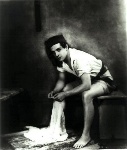 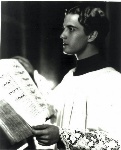 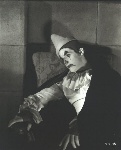 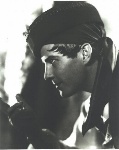
FADING STAR |
But h is star was beginning to fade. His contract with MGM Studios expired in 1935 and the studio did not renew it. Novarro continued to act sporadically. A Broadway tryout was aborted in the 1960s, though Novarro kept busy on television. While at the peak of his success in the late 1920s and early 1930s, he was earning more than US$100,000 per film. He invested some of his income in real estate.
NOVARRO & GARBO IN MATA HARI |
| |
Who will be Garbo's leading man in Mata Hari? Of male MGM stars, that left Buster Keaton, Wallace Beery, John Gilbert, and Ramon Novarro. They chose Novarro for Mata Hari. At the time, Novarro was one of Hollywood's most eligible off-screen bachelors. The prospect of working with Garbo made Novarro so anxious that he consulted self-help pamphlets. “I used to read these funny little booklets that said ‘You might be better than the man you're talking to.' And I said to myself, ‘I might be and I might not. I don't think that I am better than anybody–but I don't think that I am less.' "
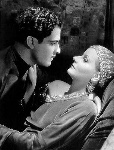 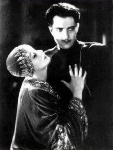
LATER LIFE |
After his career ended he was still able to maintain a comfortable lifestyle. He had also refused a "lavender marriage." As Novarro's career declined in the sound era, he became less cautious about his homosexuality. In later years, he drank heavily and lived alone in the Hollywood Hills. On Halloween in 1968, he was beaten to death in his home by two teenaged brothers – hustlers and petty thieves – from Chicago.
THE FIRST MEETING |
Garbo knew of Novarro and met him in 1926 for the first time when she was doing The Temptress with Antonio Moreno. “I would go on the set and watch them. That was beforeshe got a little difficult. Her director Mauritz Stillerwas a good friend of mine and a good friend of F. W. Murnau's. He was a big-headed man. He looked strange,” Novarro said. When Garbo arrived at her dressing room the first day of filming Mata Hari on September 30, 1931, she was greeted by a large bouquet of flowers and a card that read: “I hope the world will be as thrilled to see ‘Mata Hari' as I am to work with her–Ramon Novarro.”
ABOUT WORKING WITH GARBO |
“When we began work together, I discovered that Miss Garbo did not care to rehearse. It was her habit to walk into her scenes and go right through with them. She knows the story and the dialogue by heart before production begins. But it is difficult for me to work that way. I need rehearsals to make myself certain I understand exactly how a scene should be played. I like to rehearse with the lights, camera, microphone, just as it will be when it is filmed. When Miss Garbo realized my method of working differed from her own, she graciously offered to rehearse. While the new camera angles were being lined up on the set, we would sit in her little portable dressing room and go over the lines together. Other times she would prefer to walk outside and run through the dialogue as we strolled the streets between the stages,” Novarro told Interviewers.
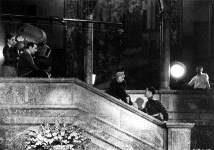
GARBO TOO TALL? |
A few weeks before filming was to begin, Novarro got a call from the MGM office. “They said We have to make a test,” recalled Novarro. “I heard that she was so tall that I had boots [made] and I put lifts inside.” The was the problem, though, of his height, which was five feet eight inches. At five seven, Garbo might not be at the right sight line for natural-looking love scene.
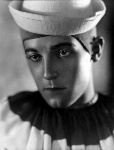 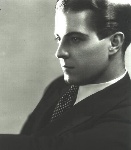
NOVARRO'S SCREEN-TEST |
Still, on the day of the test, he did not know what to expect. “They said that at first she was rather offstandish [sic],” recalled Novarro in 1968. “I wasn't afraid or timid, really. So I made up and I went on the set–and she was late. Which was very unusual because [I had heard that usually] when she said three o'clock it was three o'clock! So she came in without makeup. And she just looked at me and said ‘It's all right.' No test. Nothing. And I said, `My God! If I had known, I would not have made up and put on all this costume and everything: But she just wanted to find out my height.”
FILMING MATA HARI |
Filming started on September 30, 1931. Their first scene together was set in Mata Hari's bedroom and the sound levels gave them trouble, and the shot had to be taken several times. “I felt very strange,” recalled Novarro, “and I imagine that Miss Garbo also felt some restraint at the time.” After an hour on the set,the two professionals relaxed. “She was so very charming, however, that I felt instantly comfortable. There was a total absence of the tension I feared.” “As we posed,” remembered Novarro, “both of us seemed suddenly self-conscious. In a way it was a test. Perhaps she felt I was watching to see if she would upstage me, a trick to hold the center of the picture. Or possibly she was waiting to see if I would try it on her. It is strange, but little things sometimes mount to enormous proportions. Whatever it was that made me feel tense at that moment, it vanished the second I heard the shutter click. She looked up and laughed at me. We were friends.”
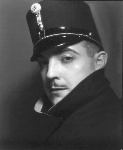 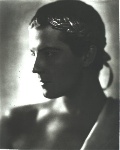
NOVARRO ABOUT GARBO
A complete metamorphosis |
Novarro had worked with many actresses, but he had rarely seen technical mastery allied to inner conviction. “Her (Garbo) emotional intensity is genuine,” he said. “The instant she begins a scene, her whole being seems to change. Her role acts as a complete metamorphosis. At once she is Mata Hari and not Greta Garbo. It is an inspiration to work with her. You find yourself living the role, not merely acting it.”
Rehearsing the love scenes |
What surprised Novarro, too, was that her well-known propensity for assuming the dominant position in her love scenes was not a concept thought up by Clarence Brown or Mauritz Stiller; it was her own. This was why she wanted to rehearse her love scenes without the interference of a new director. “Garbo always wanted to rehearse the love scenes with me in private,” recalled Novarro. “She needed to be able to concentrate. She had to convince herself before she could convince anyone else.” This preparation also took place on the darkened set. “She and I staged our love scenes before Fitzmaurice came in. She would say, ‘Well, in the last one you sat ... and in this one I sit.'”
Her quitting time |
Even so, Novarro found her mysterious. “I wondered how Garbo knew when it was just exactly five o'clock, her quitting time. Then one day I learned. Alma, her colored maid, would raise up her makeup box mirror as a signal. When Garbo saw it, she started taking the pins out of her hair without losing another moment.” At another time he said, “When her maid, Alma, showed up on the set at 5:00 with a glass of water, it was no act that Greta looked so tired,” he observed. “She would take her headdress off, shake the hairpins from her head, smile graciously, and then say good night. No word of complaint or apology. She came to work early in the morning and worked steadily until five at night. That's all there was to it.”
THE MATA HARI PREMIERE
|
Mata Hari premiered on New Year's Eve in New York. Novarro was visiting the city. Garbo did not attend the premiere. Mata Hari the most profitable film in Garbo's entire career, with a profit of more than $1 million. This was in spite of reviews that said things like “she dances rather badly,” “her costumes ... are cruelly unbecoming,” and “Novarro lacks vigor.... there is too much Latin softness about him,” but the film was a smash.
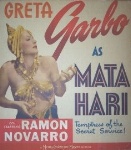 LOVE AFFAIR? |
MGM publicity promoted a romance between Garbo and Ramon Novarro. But Novarro was a confirmed bachelor. During the filming of Mata Hari, rumors abounded that he'd fallen madly in love: “Greta Garbo is my ideal woman, but I shall never marry.” "Artists shouldn't marry, in general“, he said. Sometimes, while filming Mata Hari and on other occasions, Garbo met Novarro for dinner or a show. They sent messages back and forth under the guise of their character's names in Mata Hari. They also had early morning breakfasts at the Ritz, and even frequented the nightclubs in Harlem.
GARBO KNEW THAT HE WAS GAY |
It is said that Garbo knew that, like Stille, Novarro preferred men to women. Mata Hari was the first complete Garbo performance to communicate a coded message to gay and lesbian audiences. It is notable for Ramon Novarro's passive femininity as well as Garbo's more aggressive masculine posture.
TRIVIA ABOUT NOVARRO & GARBO
The Son - Daughter |
A favorite game in Hollywood involved matching obscure film titles to prominent stars. It was an inside “joke,” combining underground gossip and intriguing innuendo with movieland's top names. The Hollywood Reporter devoted at least two columns to the “game.” Some of the connections were naturals and as such were rather benign: Irving Thalberg in The Little Giant; Jean Harlow in Hips, Hips, Hooray!; fan dancer Sally Rand in We're Not Dressing. Others bordered on the incendiary: Marlene Dietrich, Male and Female; Cary Grant, One Way Passage; Janet Gaynor, I'm No Angel; Ramon Novarro, No More Ladies; Myrna Loy, Underneath the Red Robe; George Brent, The Warrior's Husband; and Jeanette MacDonald, Eskimo. Garbo was matched with an insignificant Ramon Novarro feature entitled The Son - Daughter.
Novarro accepted an award for Garbo |
In 1957, when the George Eastman House in Rochester presented awards to the all-time great silent-film performers, Garbo was a recipient in absentia, while Ramon Novarro was her apologist: “She wanted so much to come. It meant so much to her to have been given this honor. I spoke to her, and she was in a torment of indecision. Finally her eagerness to be a part of this wonderful occasion won out over her shyness, and she agreed. And, having agreed, she immediately broke out in a psychosomatic rash. The doctor put her to bed for a week.”
|
|
|
SOURCES
Greta Garbo: A Cinematic Legacy – by Mark A. Vieira.
Karen Swenson – A life Apart
Barry Paris – Garbo
Wikipedia |
| |
| |